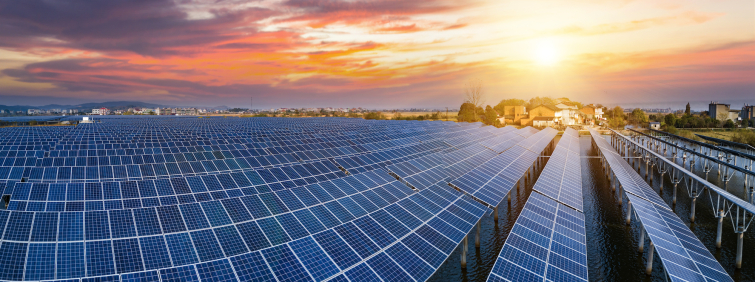We conducted a project called “Reliability and Power Degradation Rates of PERC Modules Using Differentiated Packaging Strategies and Characterization Tools.” Learn more about the project below.
Project Overview
PERC cells are rapidly overtaking the global solar market as more manufacturers switch from the traditional Al-BSF silicon configuration due to the improved cell efficiency with comparable cost. Therefore, understanding the reliability and degradation mechanisms of the various PERC architectures in relation to module packaging strategies is of increasing importance to achieve requisite 25 to 30 year product lifetimes. This includes not only the durability of the cells themselves but also how the different encapsulant and backsheet packaging materials protect or induce degradation in PERC cells, with comparison to conventional Al-BSF cells. To this extent, mono- and multi-crystalline bifacial PERC half cells, along with multicrystalline half-cell Al-BSF mini-modules, were fabricated with white, UV cutoff, and transparent EVA and POE encapsulants.
These minimodules are exposed, step-wise, to accelerated exposure under modified damp heat (80oC / 85%RH) exposure conditions. Current-voltage (I-V) and Electroluminescent (EL) image comparisons show the highest power loss for Al-BSF modules with white EVA encapsulant due to metalization corrosion, with UV cutoff encapsulants and PERC cells showing the best initial and long term performance. In separate 3200 hours of damp heat exposure for a series of full-sized, monofacial, monocrystalline PERC and multicrystalline Al-BSF modules, sample cores were removed for SEM imaging of metallization corrosion at the cell front gridlines. Results identify delamination at the cell/grid line interface, with XPS analysis revealing oxide formation at these near busbar corrosion sites.
Members and Collaborators
- Roger H. French (Principal Investigator and Kyocera Professor, CWRU)
- Laura S. Bruckman (Research Associate Professor, CWRU)
- Alan J. Curran (Department of Materials Science and Engineering, CWRU)
- Menghong Wang (Department of Macromolecular Science and Engineering, CWRU)
- Eric J. Schneller (Florida Solar Energy Center, University of Central Florida)
- Michael Martin (University of Connecticut)
- Dylan J. Colvin (Florida Solar Energy Center, University of Central Florida)
- Nafis Iqbal (Florida Solar Energy Center, University of Central Florida)
- Bryan D. Huey (University of Connecticut)
- Kristopher O. Davis (Florida Solar Energy Center, University of Central Florida)
- Jianfang Dai (Cybrid Technologies Inc.)
- Jean-Nicolas Jaubert (Canadian Solar Inc.)
- Brent Brownell (Cybrid Technologies Inc.)
- Jennifer L. Braid (current affiliation: Sandia National Laboratories)
Articles
PVSC 47 evaluation abstract submission
Degradation of bifacial PERC and Al-BSF cell minimodules with white and clear encapsulant combinations in modified damp heat
Acknowledgements
This material is based upon work supported by the U.S. Department of Energy’s Office of Energy Efficiency and Renewable Energy (EERE) under Solar Energy Technologies Office (SETO) Agreement Number DE-EE-0008172.

